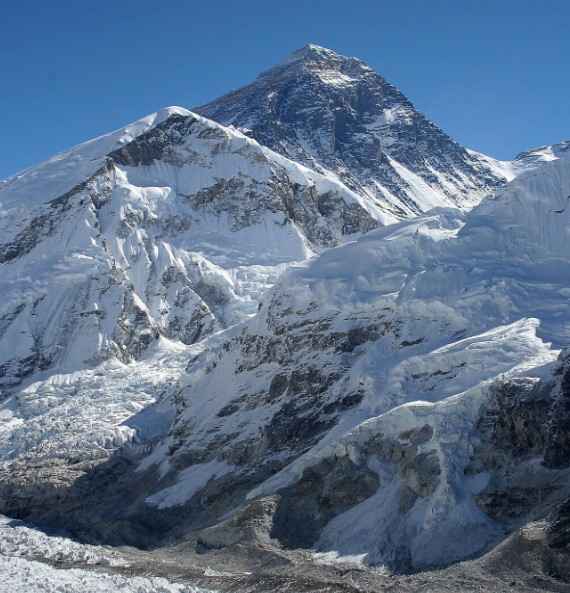
Alright, listen up, my fearless female travelers! Today, we’re diving headfirst into the breathtaking wonderland that is Rainbow Valley, nestled deep within the mighty Himalayan region. Get ready to have your socks knocked off by the jaw-dropping scenery and mind-blowing geological wonders that await you. Oh, and did I mention it’s also known as the “Death Zone”? Yup, you heard that right. This place is not for the faint of heart. But fear not because your favorite travel blogger (that’s me, if you couldn’t tell 😉 ) is here to give you all the facts and details on Rainbow Valley.
Now, let’s address the elephant in the room, or should I say the “Death Zone.” Yeah, I know, it sounds like something out of a horror movie. But don’t worry, we’re not talking about zombies or killer clowns here.
The name “Death Zone” is associated with the high-altitude challenges of Mount Everest, which happens to be in the same neighborhood as Rainbow Valley. You see, when you’re exploring this neck of the woods, you’re entering some serious high-altitude territory. Oxygen becomes as precious as that pair of shoes you splurged on last month.
Rainbow Valley sits at a jaw-dropping elevation of 26,000 feet above sea level. That’s like being on the world’s tallest rollercoaster, except instead of loops and drops, you’ve got rugged terrain and breathtaking beauty as far as the eye can see. You’re in the heart of Sagarmatha National Park, a UNESCO World Heritage Site, so you know this place is legit and protected for your viewing pleasure.
Now, let’s get real and address the elephant in the room – or should I say, the “Death Zone.” Yeah, they weren’t kidding around when they came up with that one. As you ascend toward the mighty summit of Mount Everest, the air becomes as thin as that ex-boyfriend who ghosted you last year. The struggle is real! The oxygen levels in the Death Zone are so scarce that they can’t sustain human life for long.
So, why the heck is it called the “Death Zone”? Well, ladies, it’s because this place throws some serious challenges your way. We’re talking about thin air that makes your lungs work harder than a treadmill on the highest incline setting. Add to that freezing cold temperatures and weather that changes faster than a chameleon changes its color. Oh, and did I mention those vibrant rock formations that give Rainbow Valley its name? These colorful beauties are a result of mineral-rich deposits that reflect sunlight in a way that would make a disco ball jealous. But don’t let their beauty fool you; they’re as unpredictable as a Tinder date without a profile picture.
First up, let’s talk views. Rainbow Valley is like that stunning Instagram travel photo come to life. As you stand among those vibrant rock formations, you’ll be treated to vistas that will make your jaw drop, and your camera memory card burst at the seams. But the star of the show? Oh, that would be none other than Mount Everest itself, proudly towering above all else like the queen of the world. It’s a sight you won’t soon forget!
And it doesn’t stop there, ladies. The surrounding peaks of the Himalayas join the party, creating a snow-capped symphony that stretches as far as the eye can see. The sheer grandeur of this natural amphitheater will make you feel like you’re in a real-life movie set. So, grab your popcorn and get ready for a visual feast that will stay with you long after you’ve left Rainbow Valley.
But here’s where things get a little dicey. As we bask in the beauty, we can’t forget about the not-so-subtle hazards lurking in the shadows of this “Death Zone.” First up, we’ve got extreme altitude – the kind that will mess with your head and leave you gasping for breath like you just ran a marathon with zero training. Altitude sickness, impaired judgment, and frostbite are not exactly what we signed up for.
And let’s not forget about Mother Nature’s unpredictable mood swings. One moment, you’re sipping your hot cocoa under a clear sky, and the next, you’re caught in a blinding snowstorm with winds that could rival the gusts of a hurricane. Talk about a wild ride. Add in whiteouts, avalanches, and crevasses that could swallow you up like that bag of airport snacks you swear you won’t eat but end up devouring anyway, and you’ve got yourself an adventure like no other.
But fear not. Preparation is the name of the game here. Before you embark on your journey to Rainbow Valley, you need to have your ducks in a row – and by ducks, I mean knowledge and gear. Take the time to educate yourself on high-altitude trekking, avalanche safety, and wilderness survival. Enroll in some mountaineering courses or grab a drink (or ten) with experienced guides who can share their wisdom and tips for navigating this high-risk terrain.
And speaking of gear, don’t be cheap. Invest in high-quality gear that can handle the wild ride of high-altitude trekking. Warm, moisture-wicking clothing, insulated boots, and equipment to fend off the biting cold are non-negotiable.
Now, here’s my final piece of advice: Don’t go it alone. Seriously, don’t be a hero and try to conquer the Death Zone without an experienced guide by your side. These seasoned pros have the expertise, knowledge of the terrain, and the ability to make life-or-death decisions when shit hits the fan.
What is the death zone on Mount Everest?
A: The death zone, my friends, is that cozy little area above approximately 8,000 meters (26,000 feet) where the air is so thin, it’s like trying to breathe through a straw… in space. Yeah, it’s not exactly a picnic up there.
Why is it called the “Death Zone”?
A: Well, if you haven’t figured it out by now, the death zone is aptly named because, oh… I don’t know… it’s a place where the oxygen is about as scarce as common sense at a high school prom. The high altitude and thin air make it a breeding ground for altitude-related illnesses.
How do climbers deal with the thin air in the death zone?
A: Ah, here comes the survival of the fittest part. Climbers in the death zone skillfully cheat death by lugging around oxygen tanks and masks like they’re the latest summer fashion accessories. Yep, they huff and puff through those tubes to ensure they have enough life juice to keep going. Acclimatization is also key.
What are the primary dangers in the death zone?
A: Oh, where do I even begin? Altitude sickness, frostbite, hypothermia, avalanches, falls, and a lovely combination of all the above. It’s like a choose-your-own-adventure book, but instead of reaching the end, you’re just trying not to die.
How many climbers have died in the death zone of Everest?
A: Since the early 20th century, as of 2023, more than 320 climbers have met their untimely doom on Everest, but this is not just in the death zone but all areas on Everest, but the majority do die in the Death Zone. It’s like a morbid leaderboard of epic proportions. Everest sure knows how to keep count, doesn’t it?
What happens to climbers who die in the death zone?
A: Well, my intrepid explorers, when climbers shuffle off their mortal coil in the death zone, their bodies often become permanent residents of the mountain. Why, you ask? Because bringing those unfortunate souls down from such extreme altitudes is as challenging as trying to solve world hunger with a can opener. They become part of the haunting landscape, serving as eternal reminders of both the beauty and the dangers that lie within Rainbow Valley.
Alright, my adventurous ladies, I hope I’ve ignited your curiosity and added a touch of humor to this deadly serious topic. Remember, exploring the death zone is like riding the ultimate rollercoaster – thrilling, terrifying, and not for the faint of heart. Make sure you prepare, train, and prepare some more if you’re even considering taking on this adventure, and as always Travel Till You Drop!
Use Skyscanner to find a cheap flight. This is my very first stop when I’m looking for my next trip. It’s a fast, easy-to-use search engine that is perfect for finding an affordable flight, a perfect hotel, and the right rental car for you in locations around the globe.
If you are looking for a super budget friendly location and are open to a hostel stay, make sure you book your hostel with Hostelworld. It offers the broadest range of quality hostels around the world.
If you’d prefer a hotel or a guesthouse for stays less than 28 days, drop on over to Booking.com It’s perfect for providing excellent options, a ton of user reviews, and prices to fit every budget.
For stays over 28 days, AirBnB still remains my #1 choice. User reviews and monthly pricing allow for some incredible deals all around the world.
Travel insurance is but a small up-front investment that you won’t want to leave home without. After just one experience of having to delay or cancel your trip or having your luggage stolen, you’ll wish you would have made that investment. I’ve hated my life a few times when the moment arose, and I decided to skip out. Let’s just say, I’ve changed my ways and recommend each of the following companies to protect your ass-ets.
Travel credit cards allow you to earn points that can be redeemed for free flights and accommodation — all without any extra spending. Check out my guide to getting free flights to get started.
Check out my Resource Page for the best companies to help you book your travel at reduced rates! This list will help you get to where you’re going. I know-I use them ALL the time!


Hi, Jill Here
Hi! I’m Jill, a Dallas, Texas girl traveling the world. After a career in the Air Force and touring over 50 countries later, my need to explore keeps going! It’s time to rock & roll and find all those places I never knew I was missing.
Table of Contents
Join me to get exclusive travel tips, giveaways and more!
Gallery
Copyright © 2023 | All Right Reserved